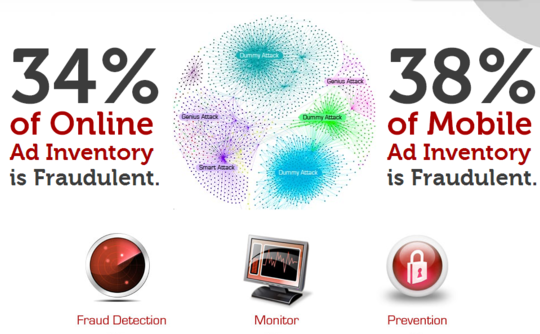According toresearch conducted by digital security firm White Ops and the Association of National Advertisers (ANA), nearly a quarter of video ad impressions are triggered by "bots;" (automated entities that mimic the behavior of humans by clicking on ads and watching videos) and11% of display ads are viewed by fake consumers, created by cybercriminals with the purpose of taking a slice of the billions of dollars spent on digital advertising each year.
The White Ops/ANA study is one of the most comprehensive on the subject of online fraud in digital advertising. It analyzed 181 campaigns from 36 ANA member companies, over a two-month period earlier this year.Ad budgets ranged from $10 million to more than $1 billion and brands ranged across nine vertical categories. Tagged to identify bot fraud, the ads accounted for 5.5 billion impressions in 3 million domains.
The findings
The study found that while some bot fraud was triggered by fake websites, the majority of it(67%) came from bot nets taking over unsuspecting users’ home computers. As users logged into services such as Gmail, Facebook and Twitter, the bots infiltrated their systems and mimickedthe user’s behavior; sophisticated bots were able to move the mouse and move the cursor over ads;they also put items in shopping carts and visited websites to generate cookies, in order to appear more demographically appealing to advertisers and publishers.





